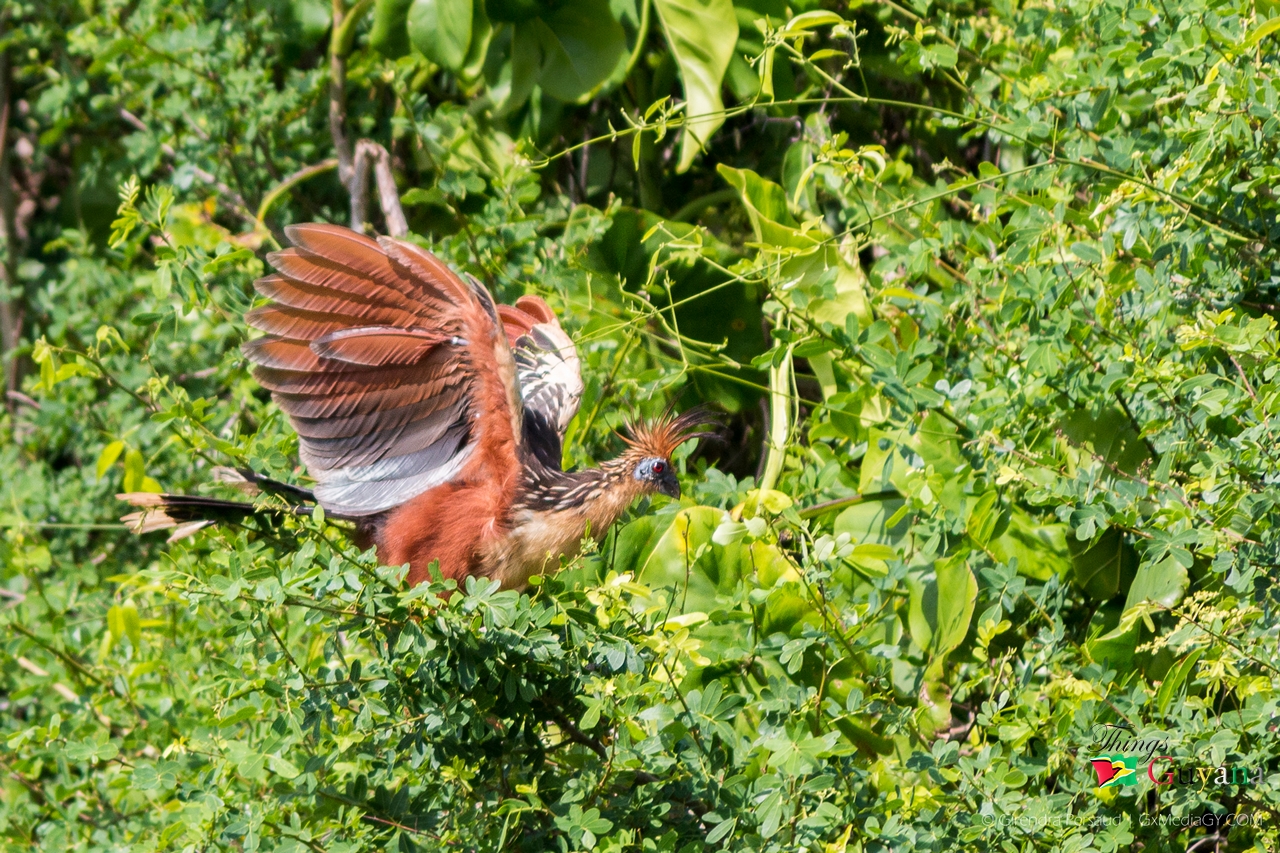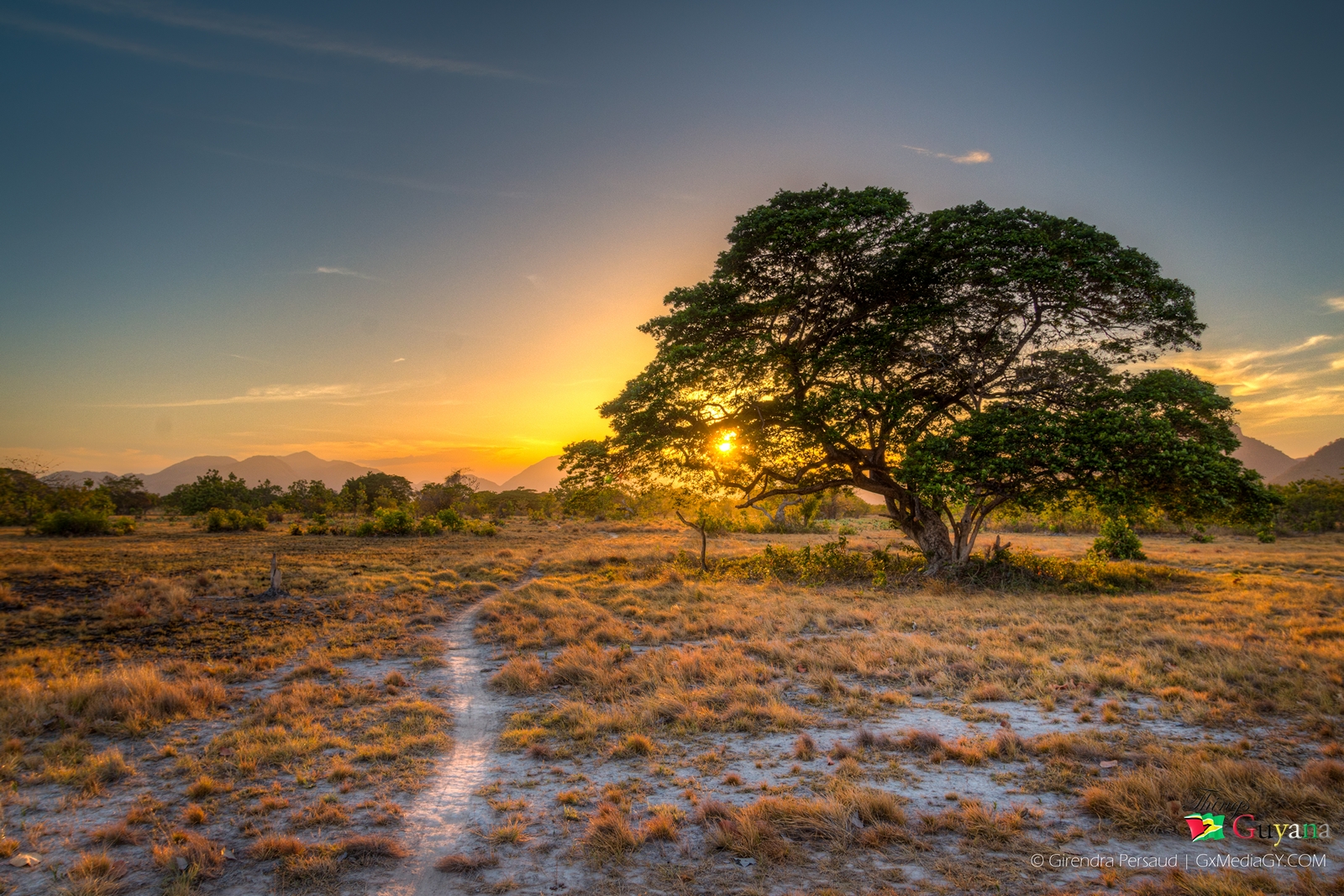The hoatzin (Opisthocomus hoazin) is a South American bird with some strange features. It’s also called the reptile bird, the skunk bird, and the stink bird in Guyana. It’s known for its unusual digestion method, an unpleasant smell, clumsy movement, and noisy behavior. It’s also famous for the claws on the wings of the young birds.
Where Does The Hoatzin Live?
Hoatzins are found in the lowlands of northern South America and are found through out Amazonia. The Hoatzin is generally found along riparian corridors in the Amazon and Orinoco River basins. In addition, they are found along the Atlantic coast through Guyana, Suriname, and French Guiana. Hoatzins forage entirely in trees and bushes, and require dense vegetation. This bird can be found throughout the year in areas along the banks of the Berbice River and its tributary, the Canje Creek, and to some extent, on the Abary, Mahaicony and Mahaica Rivers. It feeds on the leaves of aquatic vegetation. The nesting period for the Hoatzin, commonly known as the Canje Pheasant, is usually from April to September.
Description Of The Hoatzin
The Hoatzin is a large, bulky bird with relatively short, rounded wings, a long, squared tail, and powerful legs and feet. It has a distinctive shape, having a relatively long neck with a small head. The head is scantily feathered, but with a very distinctive, floppy crest. The bare skin that surrounds the eye on much of the face is blue in color. The bill of the Hoatzin is short, stout, and laterally compressed. The wings of the Hoatzin are broad and rounded, and relatively short. The tail is relatively long, broad, and rounded, and has a broad buff-colored terminal band. They are generally colored with browns, buffs, and black. The upperparts (nape, wings, back) are primarily black and dark brown with buff-colored streaks and feather edging on the coverts. The primaries are colored with rich chestnut. The underparts are buff on the throat and breast, and chestnut on the belly and vent. The legs are relatively short, but thick and strong.
Feeding Habits Of The Hoatzin
The Hoatzin is almost completely folivorous, meaning its diet is comprised almost entirely of leaves. Plants that Hoatzins feed on appear to be among the more common species found within their range. While foraging, Hoatzins appear to feed primarily on the young leaves, shoots, and buds of a wide variety of tree species. While feeding, Hoatzins feed not only on leaves, but also flowers and fruits. However, the majority (82%) of their diet consists of leaves, while 10% is flowers, and 8% is fruit.
Communication Of The Hoatzin
Hoatzins are noisy birds, and have a wide variety of vocalizations. Contact calls between birds in social groups are described as a series of low grunts, usually 3-10 described as either “ohh” or “oww”. When defending their nest and chicks from potential predators, Hoatzins make a loud, raspy, nasal, wheezy hiss.
Behavior Of The Hoatzin
Hoatzins are poor fliers, flight is usually restricted to short movements from tree to tree, but birds are able to cover distances of up to 350 m in a single flight. They move about in trees, bushes, and vines above water coursers mainly by climbing and scrambling among the branches. When climbing through the trees, they use their wings and tail for balance. Young birds are good swimmers, and will drop into the water if threatened. During the day when not foraging, Hoatzins are perching, digesting leaves in their crop. Hoatzins adopt an unusual position while perching, termed “sternal perching,” whereby they perch with their sternum resting on a horizontal branch.
Reproduction Of The Hoatzin
Hoatzins do not begin breeding until after their first year of life. The breeding season of Hoatzin occurs during the same time as the rainy season of their territory. Hoatzins build their nests on branches over the water about 2 to 6 meter above the surface. They normally lay two to three eggs and the incubation period lasts 32 days. Both male and female brood the young, which typically remain in the nest for 2 to 3 weeks after they hatch.
Did you know?
It has the dimensions of a pheasant, but is much slimmer, with the neck and tail longer and has a small head. It has a white face with no feathers and red eyes, and there is a serrated crest on the head. It has a limited ability to fly.
Hoatzin Aka Stinkbird
Hoatzins are rather clumsy birds and they are bad at flying. They mostly hop from branch to branch. They are one of the very rare herbivorous bird species in the world. It just feeds on leaves of some trees that grow along the lakes. The hoatzin is nicknamed “stinkbird” because its flesh stinks and has a bad taste.
Article References:
- https://neotropical.birds.cornell.edu/Species-Account/nb/species/hoatzi1/breeding
- https://www.britannica.com/animal/bird-animal
- http://www.oiseaux-birds.com/card-hoatzin.html
- https://www.jungledragon.com/specie/6230/hoatzin.html







